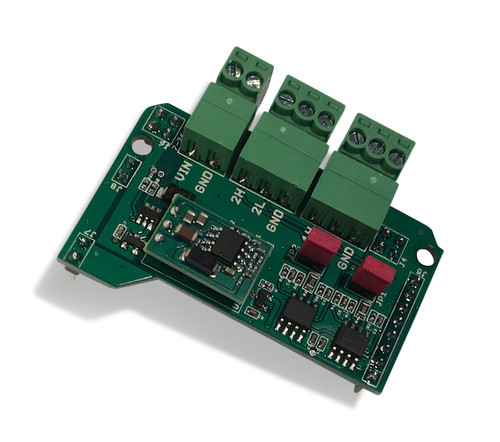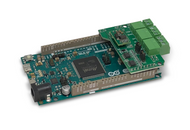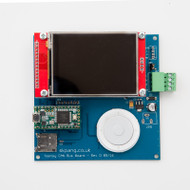Product Description
Free Shipping Within the United States!
The JCOM.CAN.DUE-X, a dual CAN bus interface for the Arduino Due, is not an Arduino shield in the common sense. The board incorporates dual CAN transceivers required by the two integrated CAN ports on the Arduino Due while allowing the operation with any Arduino-compatible shield that supports the necessary 3.3 VDC power requirements.
By combining our dual CAN port interface, the Arduino DUE microcontroller, an OBD2 or SAE J1939 cable, and open-source software libraries you are ready to go with powerful a turn-key Arduino-based dual CAN bus solution. Leverage the 32-bit processing capability of the Arduino DUE plus the built-in CAN ports for your next prototype.
In order to more efficiently serve automotive and industrial applications, the JCOM.CAN.DUE-X board supports an extended input power range of 7 to 36 VDC to power the entire system, i.e. including the Arduino Due itself.
Alternate Version
Due to global shortage of electronic components, we may ship a different-looking DC/DC converter.
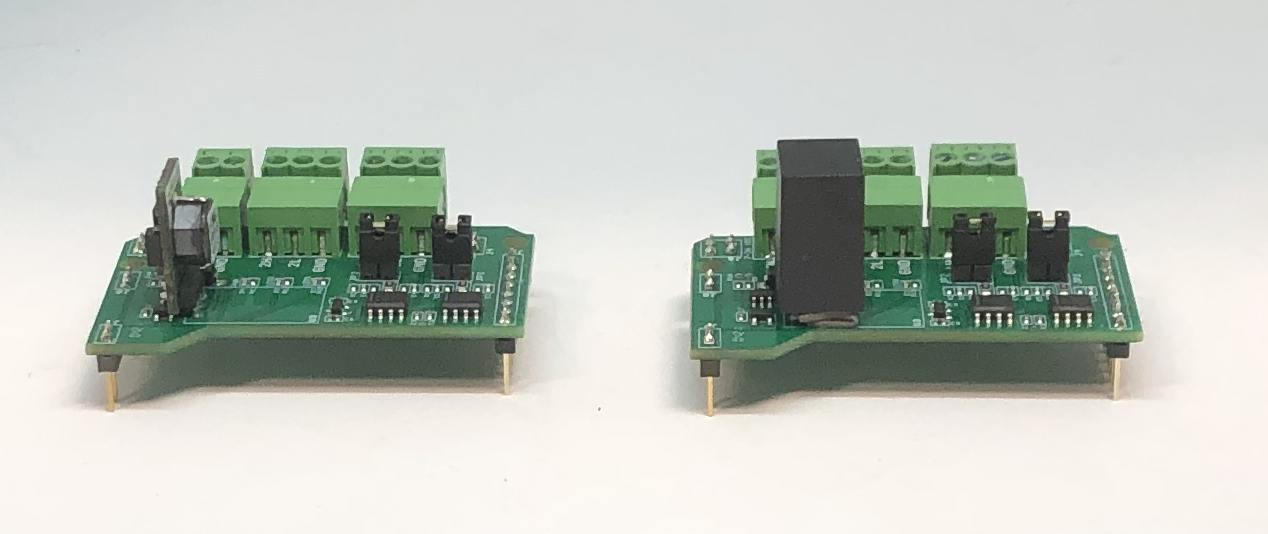
Be assured, the functionality remains the same!
Possible applications include:
- CAN to USB Gateway and Protocol Converter
- SAE J1939 Gateway and Protocol Converter
- CAN Data Logger
- CAN Bridge (connecting 2 CAN networks, even at different baud rates)
- CAN Analyzer (in combination with a suitable Windows program)
- SAE J1939 Data Monitoring
- CAN ECU Prototyping
- SAE J1939 ECU Prototyping
Features
- 2 CAN ports with three-pin terminal connectors
- Extended input power range of 7 VDC to 36 VDC
- 3 LEDS (Power, CAN Activity Port 1, CAN Activity Port 2)
- Termination resistors switchable per jumper
- Arduino Due is NOT included in scope of delivery
Components
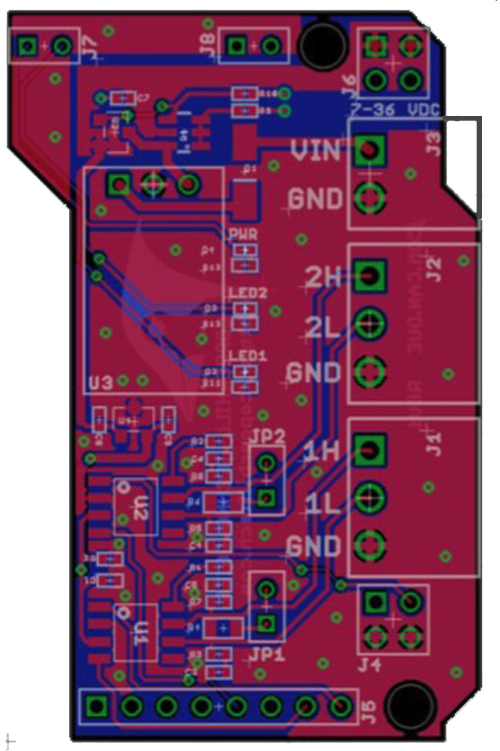
- J1 - CAN Port 0
- J2 - CAN Port 1
- J3 - External Power Supply 7 - 36 VDC
- JP1 - Jumper Termination Resistor CAN Port 0
- JP2 - Jumper Termination Resistor CAN Port 1
- PWR - Power LED
- LED1 - LED Connected to Arduino Due GPIO 14
- LED2 - LED Connected to Arduino Due GPIO 15
Trouble-Shooting:
If you experience any problems with running our program samples, please check the following:
- Make sure, your Arduino IDE supports the Due - See: Arduino Due IDE Setup...
- Make sure, you have the newest version of the Arduino IDE installed
CAN Shield Resources:
- Arduino Due: Dual CAN Port Test Sketch...
- Arduino Due: Dual CAN Port Test Sketch With LED CAN Traffic Indicators...
- Dual CAN Bus Interface For Arduino Due: Controlling the LEDs...
- ODB2 and CAN Bus Acquisition Libraries...
- SAE J1939 Protocol Stack Sketch for Arduino Due...
- App Note: ARM Cortex M3 Development Boards Require External CAN Bus Transceiver...
- CAN Bus Data Traffic Simulation With Arduino Due...
- CAN Bus Bridge (CAN-to-CAN) Application With Arduino Due...
- SAE J1939 GPS Application With Arduino Due Delivers PGN 65267 (Vehicle Position)...
- SAE J1939 250k/500k Baudrate Converter with Arduino Due - Source Code Included...
Arduino Due Resources:
- Getting started with the Arduino Due...
- Download the Arduino Software (IDE)...
- Atmel 11057 32-bit Cortex-M3 Microcontroller SAM3X/SAM3A Datasheet (PDF...)
- A Brief Introduction to Controller Area Network...
CAN Shield Projects
Programming Arduino - Getting Started With Sketches
by Simon Monk
 Clear, easy-to-follow examples show you how to program Arduino with ease! "Programming Arduino: Getting Started with Sketches" helps you understand the software side of Arduino and explains how to write well-crafted Sketches (the name given to Arduino programs) using the C language of Arduino. This practical guide offers an unintimidating, concise approach for non-programmers that will get you up and running right away.
Clear, easy-to-follow examples show you how to program Arduino with ease! "Programming Arduino: Getting Started with Sketches" helps you understand the software side of Arduino and explains how to write well-crafted Sketches (the name given to Arduino programs) using the C language of Arduino. This practical guide offers an unintimidating, concise approach for non-programmers that will get you up and running right away.
Programming Arduino: Getting Started with Sketches explains basic concepts and syntax of C with simple language and clear examples designed for absolute beginners - no prior knowledge of programming is required. It leads you from basic through to advanced C programming concepts and features dozens of specific examples that illustrate concepts and can be used as-is or modified to suit your purposes.
- All code from the book is available for download.
- Helps you develop working Sketches quickly.
Coverage includes: C Language Basics; Functions; Arrays, Strings; Input / Output; Standard Library Goodies; Storage; LCD Displays; Programming for the Web; Program Design; C++ and Library Writing
 Loading... Please wait...
Loading... Please wait...

